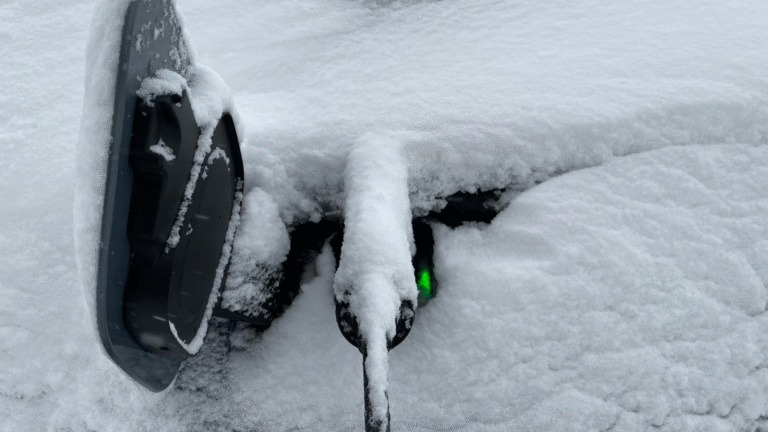As electric vehicles (EVs) become more common on Australian roads, many drivers wonder how they perform when the temperature spikes—or drops. Whether you’re dealing with blistering Outback heat or a chilly morning in Tasmania, understanding how EVs handle extreme weather is vital for performance, safety, and battery health.
In this article, we break down how EVs behave in hot and cold environments, what impacts their efficiency, and how Aussie drivers can optimise their EVs no matter the forecast.
—
Table of Contents
- How Temperature Affects EV Batteries
- EV Performance in Hot Australian Conditions
- EV Performance in Cold Climates
- Range Loss: How Much and Why?
- Tips for Maximising EV Performance in Extreme Weather
- FAQs
- Conclusion
—
1. How Temperature Affects EV Batteries
EVs rely on lithium-ion batteries, which are sensitive to extreme temperatures. Heat and cold affect the chemical reactions inside the battery, changing its performance and efficiency.
⚡ Key effects include:
- Reduced energy storage capacity
- Slower charging or discharging
- Increased battery degradation over time
- Altered regenerative braking performance
Most modern EVs have thermal management systems to regulate battery temperature, but external extremes can still have noticeable effects.
—
2. EV Performance in Hot Australian Conditions
Australia’s summer temperatures regularly exceed 35°C, especially in the interior and northern regions. Here’s how heat impacts EVs:
☀️ Effects of Heat:
- Battery degradation accelerates over time if consistently exposed to high temperatures (especially above 40°C).
- Charging speeds may be throttled to prevent overheating.
- Air conditioning use significantly increases energy consumption, reducing effective range.
🛡️ Built-in Solutions:
- Active thermal cooling systems (used by Tesla, Hyundai, Kia, Polestar, etc.)
- Automatic heat management during charging
- Solar panels (in some models) can power fans or assist in ventilation
🛠️ Practical Tip:
Park in the shade or use a reflective windshield shade to reduce cabin temperatures and lower AC energy draw.
—
3. EV Performance in Cold Climates
While extreme cold is less common in most parts of Australia, Tasmanian winters and alpine regions can drop below freezing.
❄️ Effects of Cold:
- Slower chemical reactions lead to decreased battery efficiency.
- Cabin heating consumes significant energy, cutting range by up to 30%.
- Regenerative braking may be limited until the battery warms up.
🚗 Example: A Hyundai Kona Electric with a 450 km range may drop to around 320–350 km on a frosty winter morning.
🔧 Tech Responses:
- Pre-conditioning (heating the battery while plugged in)
- Heat pumps (efficient cabin heating with minimal energy loss)
- Battery heaters (standard in EVs like Tesla, Nissan LEAF, Polestar 2)
🛠️ Practical Tip:
Schedule pre-conditioning through your app while the EV is still plugged in. This ensures a warm cabin and an efficient battery start.
—
4. Range Loss: How Much and Why?
📉 Estimated Range Reductions:
| Condition | Expected Range Loss |
|---|---|
| High Heat (35–45°C) | 5–15% |
| Cold (0–5°C) | 10–25% |
| Below Freezing (<0°C) | 20–40% |
⚡ Why?
- Batteries operate best around 20–25°C.
- More energy is used for cabin comfort (AC or heating).
- Charging may be slower or temporarily restricted.
🛠️ Tech Evolution:
Brands like Tesla and BYD now offer software updates that adjust thermal performance profiles based on ambient conditions.
—
5. Tips for Maximising EV Performance in Extreme Weather
🌞 In Hot Weather:
- Charge during cooler hours (early morning or evening).
- Use climate pre-conditioning while plugged in.
- Avoid rapid charging if battery is already hot.
❄️ In Cold Weather:
- Pre-heat the cabin and battery while connected to mains power.
- Use heated seats and steering wheel instead of full cabin heat.
- Drive smoothly to conserve power—regenerative braking may be less responsive.
🧠 General Tips:
- Use ECO driving mode when available.
- Check tire pressure—temperature shifts can deflate tires and reduce range.
- Keep your EV software up to date for optimal thermal management.
—
FAQs
🔋 Does extreme heat permanently damage EV batteries?
Not with proper thermal management. However, sustained exposure to high temperatures can increase long-term degradation.
⚡ Can I fast-charge an EV in hot or cold weather?
Yes, but charging may be slower or regulated by the car’s battery management system. Try to fast-charge when the battery is near optimal temperature.
❄️ Do all EVs come with heat pumps?
No, but many newer models in Australia (Tesla Model Y, Polestar 2, Hyundai IONIQ 5) include them or offer them as options. Check specifications.
🌡️ Is it safe to park my EV outside in extreme weather?
Yes—EVs are built to endure diverse conditions. But battery life and efficiency benefit from climate-controlled environments when possible.
—
Conclusion
EVs are impressively capable in Australia’s diverse climate—from sun-drenched coastlines to wintery hilltops. While performance and range may fluctuate in extreme temperatures, modern electric vehicles use smart thermal management systems to minimise the impact.
⚡ With the right habits—like pre-conditioning, smart charging, and software updates—your EV can handle whatever the Aussie weather throws at it.
—
Explore how electric vehicles perform in extreme heat and cold across Australia. Learn how weather affects EV range, charging, and battery health.
